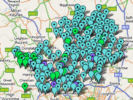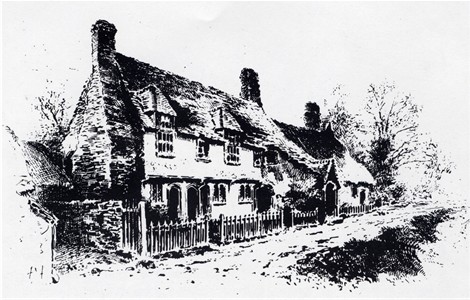|
The Town House was built in 1526 and is thought to have replaced a similar building which had already existed for four hundred years. When John Norden made his survey of the manors of Barley in 1593 for their new owner Sir John Spencer, he described it as "The Court House of the Manor of Mincinbury, formerly in the occupation of the vill or inhabitants of Barley situated opposite the church there, which the lord now uses to hold the manor courts of Mincinbury". The people of Barley appear to have resisted Sir John's claim and at a court held at Buntingford in 1609, the jury decided that the Town House was to be used "for the poor inhabitants. for their marriages, to collect and cause by meeting, the gifts of the charitable people to be obtained towards the help and relief of the poor inhabitants within the said town and also concerning assessing taxation and contributions of fifteenths, subsidies etc., provision for, preparation of books and ornaments for the said church and for the assemblies for that charge, for the due keeping of the town armour, and for the nightly and other due watch to be observed, and also for the school house, and so has been from time out of mind until the late Sir John Spencer, Alderman of London has made claim to the said house as his soil and waste."The building has been used by the people of Barley ever since for every conceivable object. An inquisition in 1638 gave a further use "the keeping of maides marriages". The Rev. R. A. Gordon said this meant homes for spinsters and the ground floor was certainly divided for elderly people to live in until about 1870. |


